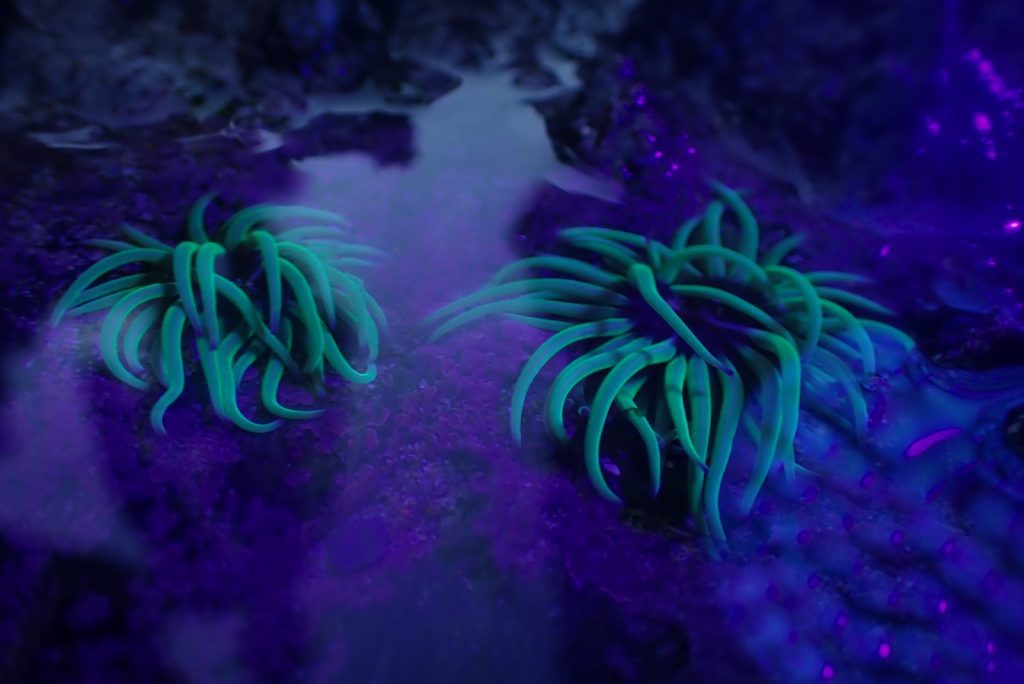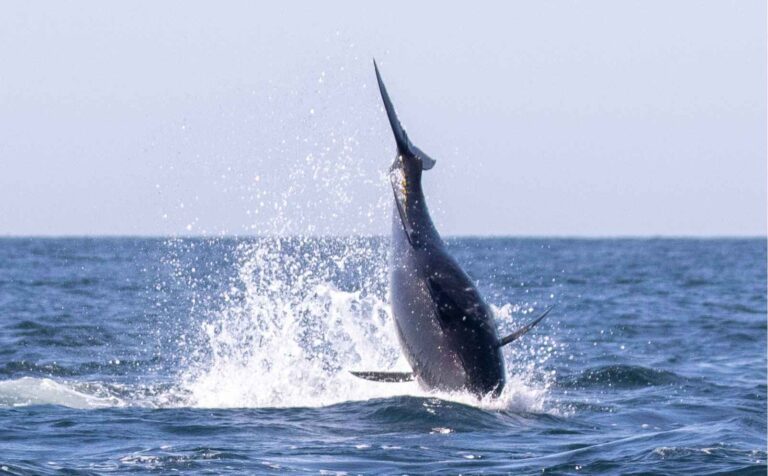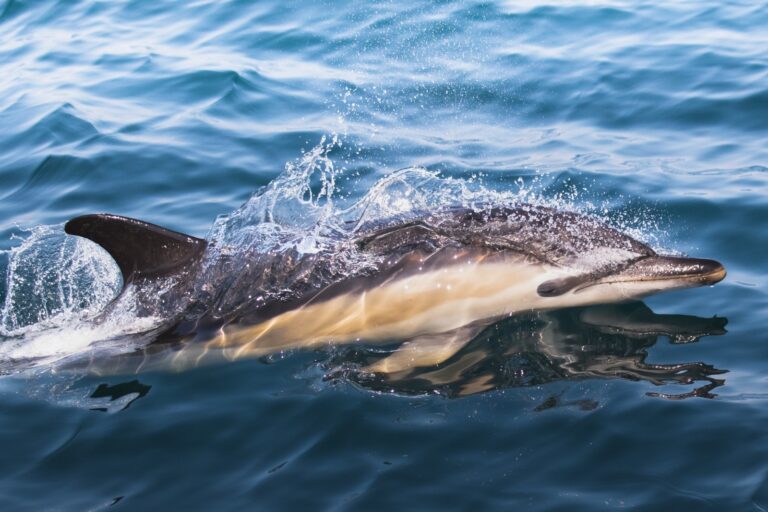Coast Boat Trips first ever season is officially over. It’s been a wild and wonderful summer, filled to the brim with smiles, adrenaline and the odd seasick wobble. With winter creeping in, don’t let the lack of rib-rides dishearten those curious minds. In this post we’ll be diving into the miniature marvels that thrive in our intertidal environments and exploring some of the wonderful flora and fauna that lives on our shores… Let’s go rock pooling!

What’s so special about rockpools?
Whatever the weather, rockpools are alive with a variety of species (though sometimes hiding underneath the high tides). These weird little crevices make up some of the most productive and diverse ecosystems that exist in the natural world. The animals that live in these areas often need to be adaptable to the ever changing environment around them. As the tide ebbs and flows, exposing and inundating these marine communities, rockpools are subject to hourly changes in temperature, water salinity, oxygen availability and many other important aspects of living for little critters. This means that rock pools often host pretty hardy species.
What’s more, their ability to adapt to these variable conditions, could be increasingly beneficial to these ecosystems considering the incoming threats that face them, of which rising ocean temperatures and ocean acidification are just two examples. As the world changes around us due to climate change, pollution and the unpredictable state of the waters, it is a soothing thought that rockpool communities stand a chance of surviving these otherwise troubling times.
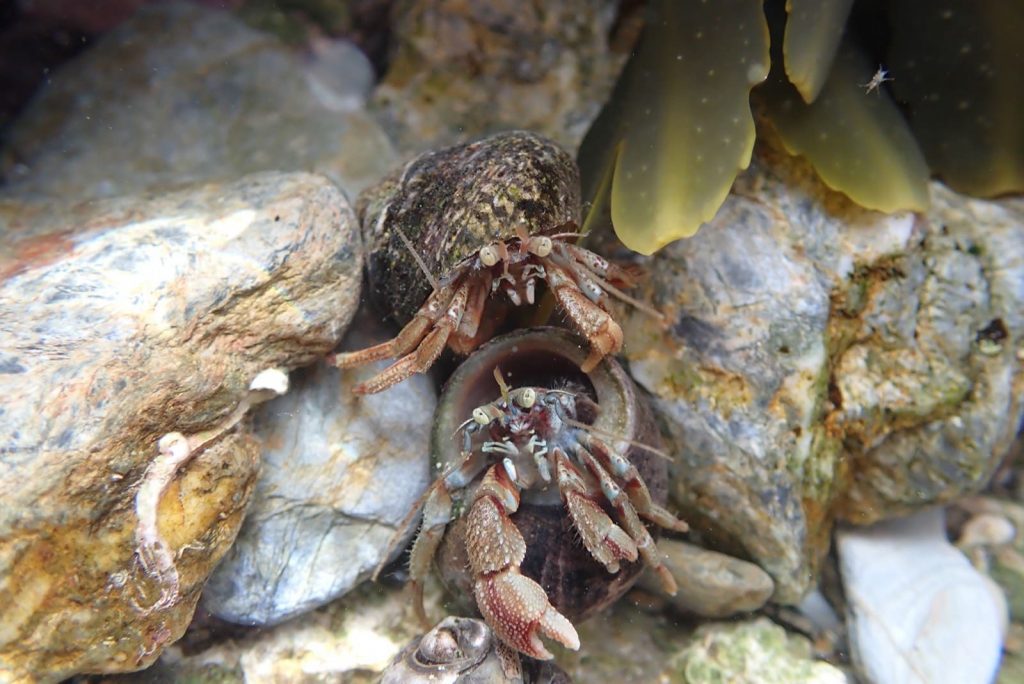
Treasures you can find in our Cornish rockpools:
Our Cornish rockpools really know how to provide us with some funky species. Head down to the reef at night with a UV light in hand and alien forms will start to appear! From gem anemones glowing a bright green and orange, to the infamous neon green snakelock anemones. Even crabs will show up to the party showing off some fluorescent features, don’t get too close though- those pincers are still just as powerful at night! But why do they glow? It’s still a bit of a mystery- although mate identification or attracting prey are two of many possible theories.
Unbeknownst to many, there are much more familiar residents in these creviced communities. What we’re talking about are the young sharks and rays that use rockpools as a nursery ground. Before hatching, their little embryos will stay for many months attached to seaweed disguised inside hardened egg-cases that vary in size, shape and colour, biding their time before they reveal themselves to the world. The egg-cases are left there to develop by adult sharks and rays that rely on the rockpools to provide ample protection and, when their young eventually hatch, plenty of food sources for the baby sharks and rays to not only survive- but thrive. These cases are often called mermaid’s purses and can be found washed up on the beaches as the adolescent sharks and rays have vacated their smaller homes, upgrading to the open ocean. As you can tell, when you start exploring these intertidal environments, you really don’t know what you might find, the opportunities are endless
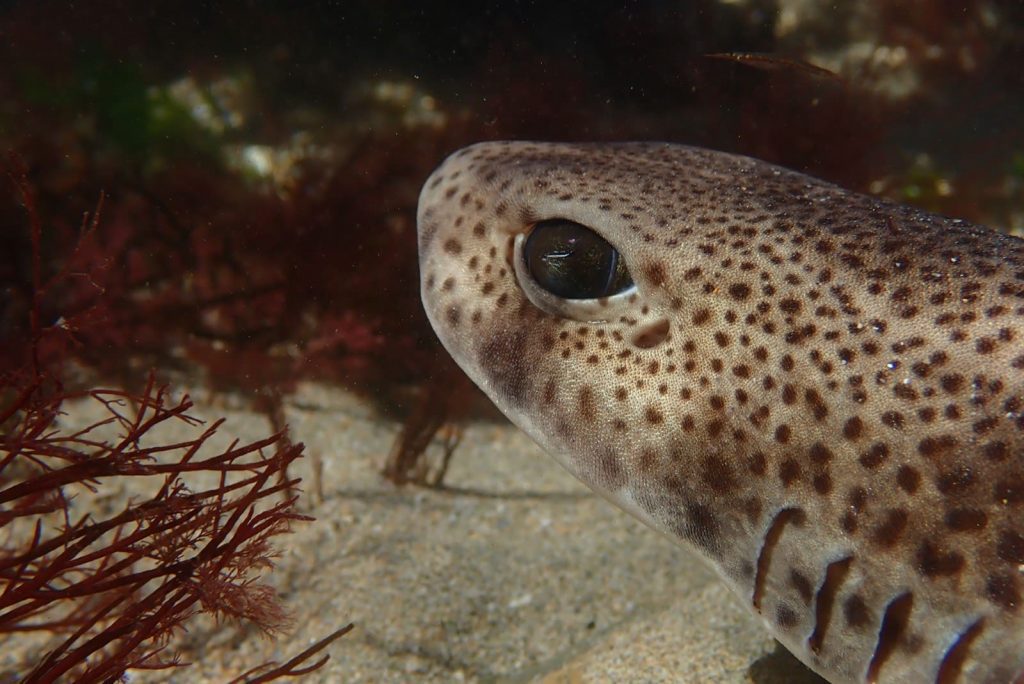
From the regulars (sea anemones and hermit crabs), to the more exciting finds (a spiny sea star here or a mermaid’s purse there) it can be hard not to get swept up in the excitement of moving on to the next, more interesting species. But don’t jump ahead to quickly! There is much to be said for sitting a moment longer and waiting to see what the wildlife reveals. Not only will the shyer creatures unearth themselves, but you might start seeing some exciting behaviours. For example, sand mason worms will often retreat into their self-built tube-like structures before you’ve even spotted their fan-like tentacles in their full glorious form.
Moreover hermit crabs can sometimes be seen fighting over empty shells. They will outgrow their current homes and start looking for bigger empty shells, but free real estate is sought after and can lead to fights and sometimes even ques of crabs looking to steal a new shell! Predation can be seen in our Cornish rockpool too… In particular, dog whelks have some especially interesting ways of getting to their prey. They drill a hole into the shells of their prey, assisted by a special organ that secretes shell-softening chemical and send in paralysing enzymes, turning the animal into a sort of soup that the dog whelk can suck up. Super weird or super gnarly- you’ll have to decide when you see it yourself!
Here’s to a winter of rockpooling!
All of this makes rock pooling a thrilling activity for both the young and old, for families and individuals alike. I advise you wear wellies and a warm jacket, and always remember to try to have as little destructive impact as possible.
If you need inspiration try looking up @sensoryecology on Instagram! Martin is a local professor and often free dives at our local Cornish beaches, documenting his fantastic finds (I am always jealous of the incredible critters that he sees).
And Mounts Bay Marine Group aims to raise awareness, protect and conserve our local marine environment and wildlife in the Mounts Bay area. They also hold rockpool events in the local area!
The most important thing to remember, as with all wildlife spotting, is that the more time you spend looking, the more you will see… So get looking! And if you see anything exciting, please tag us in your posts on social media @coastboattrips. For any assistance on identifying species or for rock pooling tips don’t hesitate to pop us a message or leave a comment. Have fun everyone!
Written by Sophia Mladjenovic. @sophiamladji


